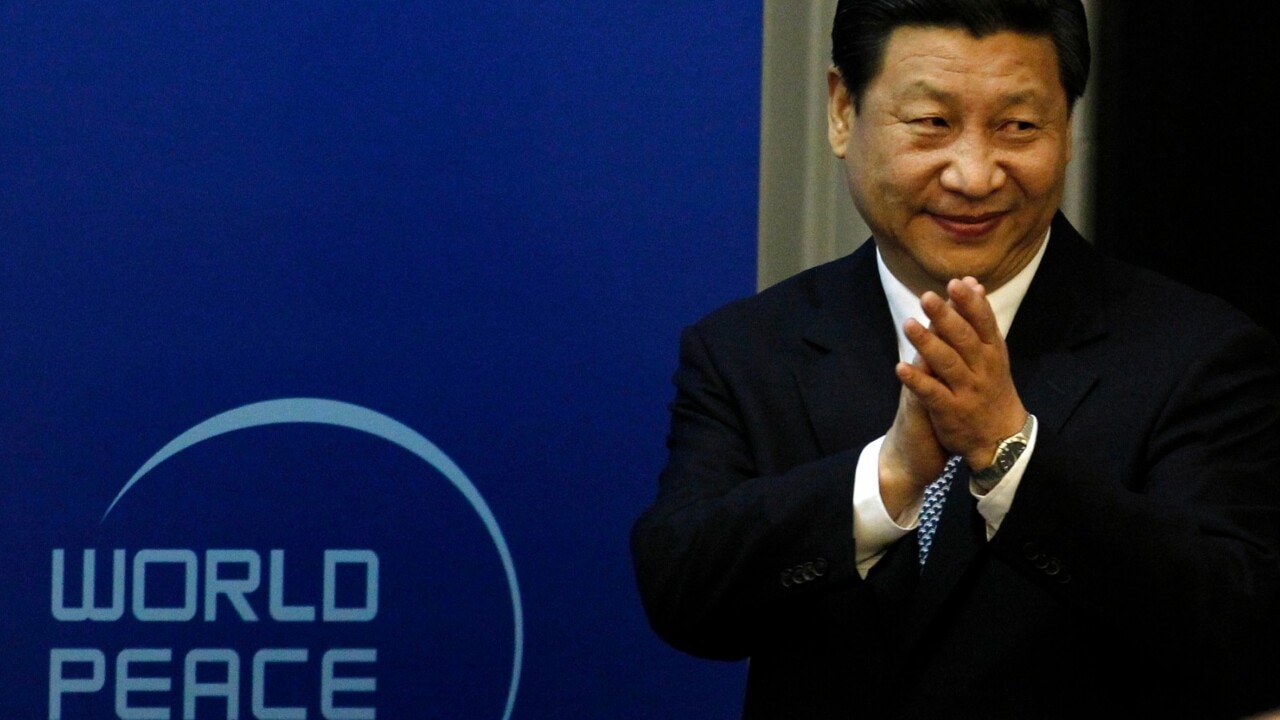Beijing fiddles with the water taps that control Southeast Asian economies
Southeast Asian nations are eyeing Beijing nervously as it fiddles with the water taps that control their economies.

Southeast Asian nations are eyeing Beijing nervously as it fiddles with the water taps that control their economies. But their citizens are alarmed at failed fish migrations and wildly fluctuating river levels. Now they’ve taken their anger to the world.
After four years of drought, the Mekong river system that is the pulsing heart of Southeast Asia has begun to recover. Fish stocks are starting to grow. Flows are again supporting irrigation.
But the same controls over its 4350km length believed to have made the drought worse are now being blamed for widespread unexpected flooding.
Why did the Lower Sesan 2 Dam release nearly all of its usable water last week? Causes are still unknown but could range from a spike in power demand or an emergency drawdown of the reservoir. See more: https://t.co/rcjt12g5M1pic.twitter.com/2KqkitKalB
— Mekong Dam Monitor (@MekongMonitor) May 10, 2022
The Mekong is the world’s 12th longest river. But it’s also one of the most important – supporting the lives of some 70 million people.
China controls the top half, where summer snow melts race down the mountains towards the flat plains of Southeast Asia. It’s built 11 hydro-electric dams on its own territory and operates several more further downstream.
But there’s a problem.
Beijing deems its water management data to be a state secret.
And it denies this has anything to do with the river’s suddenly erratic heartbeat.
Weekly Update 4.18-24:
— Mekong Dam Monitor (@MekongMonitor) April 26, 2022
Why did the Mekong rise 2m at Chiang Saen, Thailand last week? Mainly due to Nuozhadu Dam releasing ~1.2 billion m3 of water. Massive releases can deeply impact local communities, but China’s dam operators gave no notification. https://t.co/rcjt12g5M1 1/6 pic.twitter.com/1NzKfdtzTN
“When Chinese dams release more water, they don’t inform us. We have to measure the water levels every day ourselves, then we report them,” complains the Thai Office of National Water Resources.
While water flows are improving, the multinational Mekong River Commission (MRC) reports levels are still well below the 60-year average.
And that, warns a new study published in the journal Science is causing the Mekong to lose its eternal battle with the sea. Without the steady, seasonal supply of sediments from China – the Mekong Delta will continue to recede. This means most of the delta, and the homes of 17 million people, will be underwater by the end of the century.
Dammed if you do
China’s not the only Mekong nation building dams. But it has built the most. It owns and operates several others in neighbouring nations. And it controls crucial upstream flows.
“Climate change has played a role through the effects of reduced rainfall, rising temperatures, and extreme weather events,” says Research Fellow at Fulbright University Vietnam Thong Anh Tran.
“But many scholars argue that these transformations cannot solely be attributed to climate change — and that an important part of the explanation lies in the operation of large-scale hydropower dams in the upper stretches of the river.”
Since these dams were built, the Mekong’s flows have become subject to the political decisions of Beijing. And that’s heightening international concerns.
“With a controlling role in the delta, some argue that China holds back a significant amount of water for the sake of its own development, with knock-on implications and costs for downstream users,” says Tran.
Such consequences have been immediate and unexpected.
In December 2020, China’s Jing Hong Dam tested its water control equipment. It cut flows by up to two thirds for a month. That caused water levels in the Mekong between Thailand and Laos to collapse – without warning – from three meters down to one.
Beijing defended the move, saying the test was done under the terms of international agreements.
“The fragmentation of the Mekong due to the construction of large-scale hydropower dams illustrates the inability of downstream states to shape the definition of ‘reasonable and equitable’ use into one focused on regional aims, rather than centred around national interests,” says Tran.
Damned if you don’t
“Officials in the region are loath to see their own economies on the receiving end of coercive measures by Beijing,” a Center for Strategic & International Studies (CSIS) analysis reads.
“All five lower Mekong countries share deep trade ties with the economic giant to their north and would stand to suffer significantly if targeted by punitive action.”
But, their populations are suffering.
And they’re expressing their discontent on social media platforms using hashtags such as #StopMekongDam and #MilkTeaAlliance.
Good point - the first #MilkTeaAlliance campaign actually had nothing to do with protests (the Thai protests would not begin in earnest for another 6 mths). Instead it was #StopMekongDam, an environmental issue that impacts a lot of SE Asian countries.
— Niao Collective (@NiaoCollective) April 8, 2021
Source: TG (April 2020) https://t.co/tjwTllucrQpic.twitter.com/n59SisBiHc
“For a river to be healthy, it needs regular flow and not to be shocked with unnatural ups and downs,” says Stimson Center for Southeast Asia director Brian Eyler.
And so little sediment passed down from the Himalayas in 2020 that the Mekong’s usually muddy waters turned aquamarine. This reduced the effectiveness of irrigation and confuses seasonal fish behaviour, analysts say.
But Beijing rejects any responsibility.
“It is normal that upstream and downstream countries have different, even conflicting, interests in the development and utilisation of cross-border water resources. However, there is no serious water conflict in the Lancang-Mekong River, contrary to the views of some Western media reports and scholars,” The Global Timesreports Peking University Mekong analyst Zhai Kun as saying.
“When severe droughts occur in the lower Mekong River, reservoirs of the whole basin should play a role, with the co-operation of all countries, not just China”.
Eye in the sky
The difference between Beijing’s words and its actions are evident in a new monitoring project. Earth-observation satellites can capture water levels and flows on an almost daily basis.
In 2020, the Mekong all but stopped flowing. Fish were left flopping about in pools. Irrigation pumps were left high and dry.
But climate consultant Eyes on Earth pulled together data from various satellite sources and found this was the result of China’s new dams blocking flows to the lower Mekong.
Weekly Update May 16-22:
— Mekong Dam Monitor (@MekongMonitor) May 24, 2022
As the dry season nears an end, 5 of 15 storage dams we monitor have 20% or less of their usable water. This gif shows Yali Falls dam on the Sesan River in Vietnam releasing all its usable water from Jan - May 2022. Learn more: https://t.co/ugVhWQ12kL 1/6 pic.twitter.com/zBMrjaJlL8
In fact, China’s half of the river was sitting at above-average levels.
“The amount of water withheld was so large that, for the first time since modern records have been kept, there was no monsoon-driven rise in water levels just over the Chinese border in Chiang Saen, Thailand,” observed the Stimson Center’s Brian Eyler.
“If China’s dams were not there to alter flow between the upstream and the downstream, then there would have been enough water in the mainstream to keep it at or above normal levels for most of the Thai-Lao border area.”
Since then, the Mekong Dam Monitor project has been established to collate remote sensing and satellite data on the river’s flows.
It’s a move that has upset Beijing.
Foreign Ministry spokesman Wang Wenbin told a briefing that the monitor had made “major errors” of between 3 and 10 meters in assessing Chinese reservoir heights. These, he warned, could “lead to the wrong conclusion that Chinese dams have intercepted water, and may be hyped as evidence that upstream dams are causing drought downstream in Southeast Asian countries”.
More Coverage
The devil, however, is in the detail.
Water flows can, and are, being measured. And outcomes are not matching words.
“The lives of millions of Mekong residents still hang on the uncertainty characterised by the sporadic benevolence of upstream countries as well as their strong political will to increasingly squeeze the Mekong flows,” says Tran.






